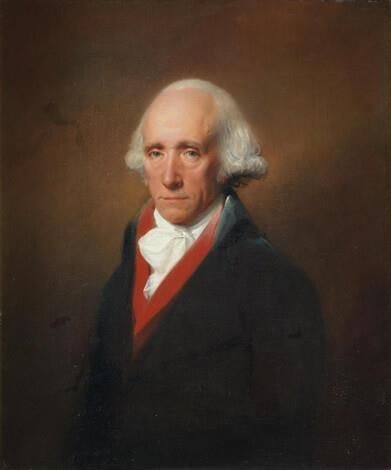The Doctrine of Lapse | Social Studies (SST) Class 8 PDF Download
Introduction
The last round of territory takeovers happened under Lord Dalhousie who was the Governor-General from 1848 to 1856. He devised a policy that came to be known as the Doctrine of Lapse. The doctrine declared that if an Indian ruler died without a male heir his kingdom would “lapse”, that is, become part of Company territory. One kingdom after another was simply by applying this doctrine: Satara (1848), Sambalpur (1850), Udaipur (1852), Nagpur (1853) and Jhansi (1854).
 Lord Dalhousie
Lord Dalhousie
Finally, in 1856, the Company also took over Awadh. This time the British had an added argument – they said they were “obliged by duty” to take over Awadh to free the people from the “misgovernment” of the Nawab! Enraged by the humiliating way in which the Nawab was deposed, the people of Awadh joined the great revolt that broke out in 1857.
Setting up a New Administration
Warren Hastings (Governor-General from 1773 to 1785) was one of the many important figures who played a significant role in the expansion of Company power. By his time the Company had taken power not only in Bengal but also in Bombay and Madras. British territories were broadly divided into administrative units called Presidencies.Administrative System: There were three Presidencies: Bengal, Madras and Bombay. Each was ruled by a Governor. The supreme head of the administration was the Governor-General. Warren Hastings, the first Governor-General, introduced several administrative reforms, notably in the sphere of justice.
From 1772 a new system of justice was established. Each district was to have two courts, a criminal court ( faujdari adalat) and a civil court ( diwani adalat). Maulvis and Hindu pandits interpreted Indian laws for the European district collectors who presided over civil courts. The criminal courts were still under a qazi and a mufti but under the supervision of the collectors.
Making of Law: A major problem was that the Brahman pandits gave different understanding of local laws based on different schools of the dharmashastra. To bring about uniformity, in 1775 eleven pandits were asked to compile a digest of Hindu laws. N.B. Halhed translated this digest into English. By 1778 a code of Muslim laws was also compiled for the benefit of European judges. Under the Regulating Act of 1773, a new Supreme Court was established, while a court of appeal – the Sadar Nizamat Adalat – was also set up at Calcutta.
 Fig: Warren Hastings: Governor-General from 1773 to 1785
Fig: Warren Hastings: Governor-General from 1773 to 1785
Power Centres: The principal figure in an Indian district was the Collector. As the title suggests, his main job was to collect revenue and taxes and maintain law and order in his district with the help of judges, police officers and darogas. His office – the Collectorate – became the new center of power that steadily replaced previous holders of authority.
The Company Army
Colonial rule in India brought in some new ideas of administration and reform but its power rested on its military strength.
Traditional Army: The Mughal army was mainly composed of cavalry (sawars: trained soldiers on horseback) and infantry, that is, paidal (foot) soldiers. They were given training in archery ( teer-andazi) and the use of the sword. The cavalry dominated the army and the Mughal state did not feel the need to have a large professionally trained infantry. The rural areas had a large number of armed peasants and the local zamindars often supplied the Mughals with paid soldiers.
Professional Soldiers: A change occurred in the eighteenth century when Mughal successor states like Awadh and Benaras started recruiting peasants into their armies and training them as professional soldiers. The East India Company adopted the same method when it began recruitment for its army, which came to be known as the sepoy army (from the Indian word sipahi, meaning soldier).
As warfare technology changed from the 1820s, the cavalry requirements of the Company’s army declined. This is because the British empire was fighting in Burma, Afghanistan and Egypt where soldiers were armed with muskets and matchlocks. The soldiers of the Company’s army had to keep pace with changing military requirements and its infantry regiments now became more important.
In the early nineteenth century the British began to develop a uniform military culture. Soldiers were increasingly subjected to European-style training, drill and discipline that regulated their life far more than before. Often this created problems since caste and community feelings were ignored in building a force of professional soldiers.
Conclusion
The East India Company started as a trading company. To further its trading interest the company started to interfere in local politics and later on took control of local administration. Ultimately through various social, political, and administrative changes, the company took full control over 63 percent of the Indian territory and 78 percent of the population. Remaining part was under the indirect control of the East India Company.
|
69 videos|431 docs|46 tests
|
FAQs on The Doctrine of Lapse - Social Studies (SST) Class 8
| 1. What was the Doctrine of Lapse? |  |
| 2. How did the Doctrine of Lapse affect Indian rulers? |  |
| 3. Which states were annexed due to the Doctrine of Lapse? |  |
| 4. Who was responsible for implementing the Doctrine of Lapse? |  |
| 5. What were the consequences of the Doctrine of Lapse? |  |

















